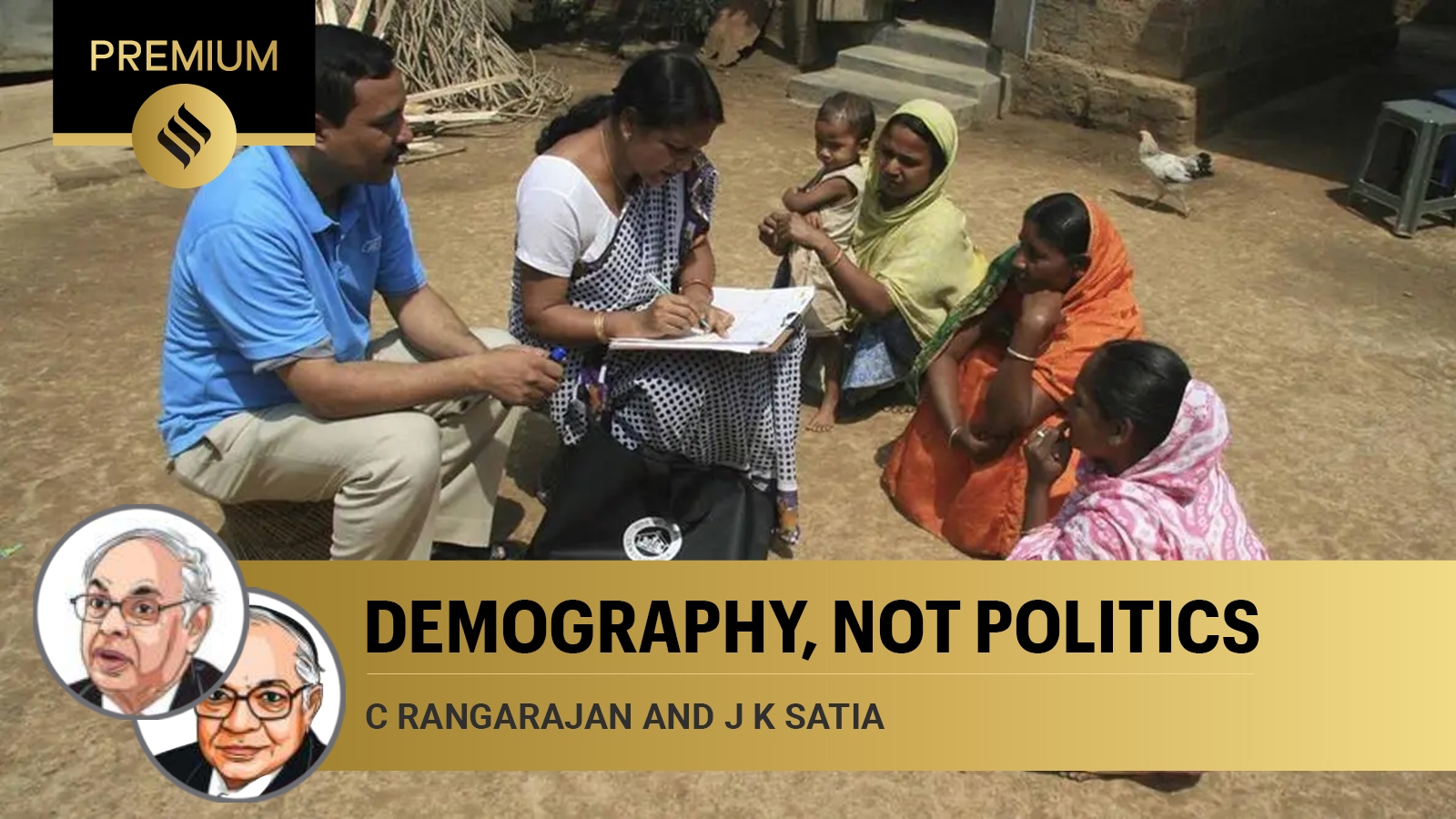
Dec 4, 2024 13:52 IST First published on: Dec 4, 2024 at 04:45 IST
Population issues are under discussion again with reports suggesting the possibility of the Census being carried out next year. The delimitation exercise for Parliamentary seats is likely to be conducted thereafter. The Chief Ministers of Andhra Pradesh and Tamil Nadu, possibly concerned about the likely reduction in representatives from their states to Parliament, have gone to the extent of saying that they would advise their people to have more children. These statements were perhaps not made seriously. Success in reducing the fertility rate must not become a disadvantage. It must be lauded and encouraged.
Population growth affects almost all aspects of human life. However, its political, economic and social consequences take on more importance, in view of the federal structure of India’s polity. Any response to this issue should take into account the various consequences of differential population growth rates among states.
The political response, to date, has been to freeze the delimitation of parliamentary seats on the basis of population for 25 years. It first started in 1976. The freeze was extended for another 25 years in 2001. One possible response now would be to extend this for another 25 years, especially because experience does not show that a freeze does not have adverse consequences. This appears to be the ideal solution in the present situation. More complex responses can be thought of such as changing the election system. One alternative is to allocate parliamentary seats to parties based on their vote share. Such measures seem out of the realm of feasibility. There are also doubts about their appropriateness.
Population plays an important role in determining the flow of resources from the Centre to the states. The Finance Commission, set up once in five years, decides the extent of the flow of resources and also how they are distributed among states. In deciding the allocation to states, population is one criterion. States with higher populations and those who have made less effort to reduce the fertility rate will gain, Before its 14th edition, the Finance Commission’s calculations were based on the population in 1971. This is comparable to the freeze applied to delimitation. But when the 14th Finance Commission was asked to use the current population. To offset the disadvantage to states which brought down the fertility rate, the commission added an additional variable called “demographic change” besides population. This practice was followed by the 15th Commission as well. Under the 15th Finance Commission recommendations, while population was given a weight of 15.0 per cent, demographic change was given a weight of 12.5 per cent. The addition of a variable such as demographic change can substantially tilt the balance in favour of states that have brought down the population growth rate.
Another important response would be to seek accelerated economic growth in the states that have lagged behind. Several efforts are currently been made in this respect — the aspirational district initiative, for instance. However, much more needs to be done and the current Finance Commission as well as the Centre and states should come together to formulate innovative strategies for this purpose. But at this point, it is only a hope.
Other responses would be to address the population issue directly. One such recommendation is the redistribution of population through accelerated migration among states. While this has been happening through supply and demand for labour, a large-scale redistribution of population on a permanent basis does not seem feasible and may have serious social consequences.
Lastly, one may address population growth issues directly. Let us briefly look at India’s population scenario. Its population is expected to peak at about 170 crore around 2070 and decline thereafter. Population growth is often measured by the total fertility rate (TFR) which is the number of children a woman would have if she followed the current fertility pattern. India, as a whole, has reached a TFR of 2, just below the replacement fertility rate of 2.1 which means that a mother would be replaced by a daughter. Nearly two-thirds of the population resides in states that have replacement or lower fertility rate, while about a third reside in states that have higher than replacement-level fertility.
most read
TFR varies considerably among Indian states — from a low of 1.5 to 3.0 according to NFHS 5. There are two ways to reduce this divergence — increase TFR in the states where it is low and/or reduce TFR in the states where it is high. Any effort to raise the fertility rate of low TFR states is unwise. India, as a country, is overpopulated. We will need a high economic growth rate to give even the current population a decent level of living. States with low fertility rates have come to this level because they have realised the hardship of having large families. We should not change this behavioural pattern. People in these states may themselves be unwilling to change.
A more viable and important initiative would be to accelerate the decline in fertility in the states where it is high through one, enhancing women’s empowerment which reduces demand for children and two, rapidly improving the quality of reproductive health services which empowers couples to meet their family size intentions. In fact, there are now only five states which have a TFR higher than 2.1. Focused attention on these states is called for in reducing fertility rates. Large differences in socioeconomic conditions among states is not conducive to harmonious relations among them. Therefore, a multi-pronged response to differential population growth rates is clearly warranted.
Rangarajan is former Chairman, Prime Minister’s Economic Advisory Council and former Governor, RBI and Satia is Professor Emeritus, Indian Institute of Public Health, Gandhinagar


